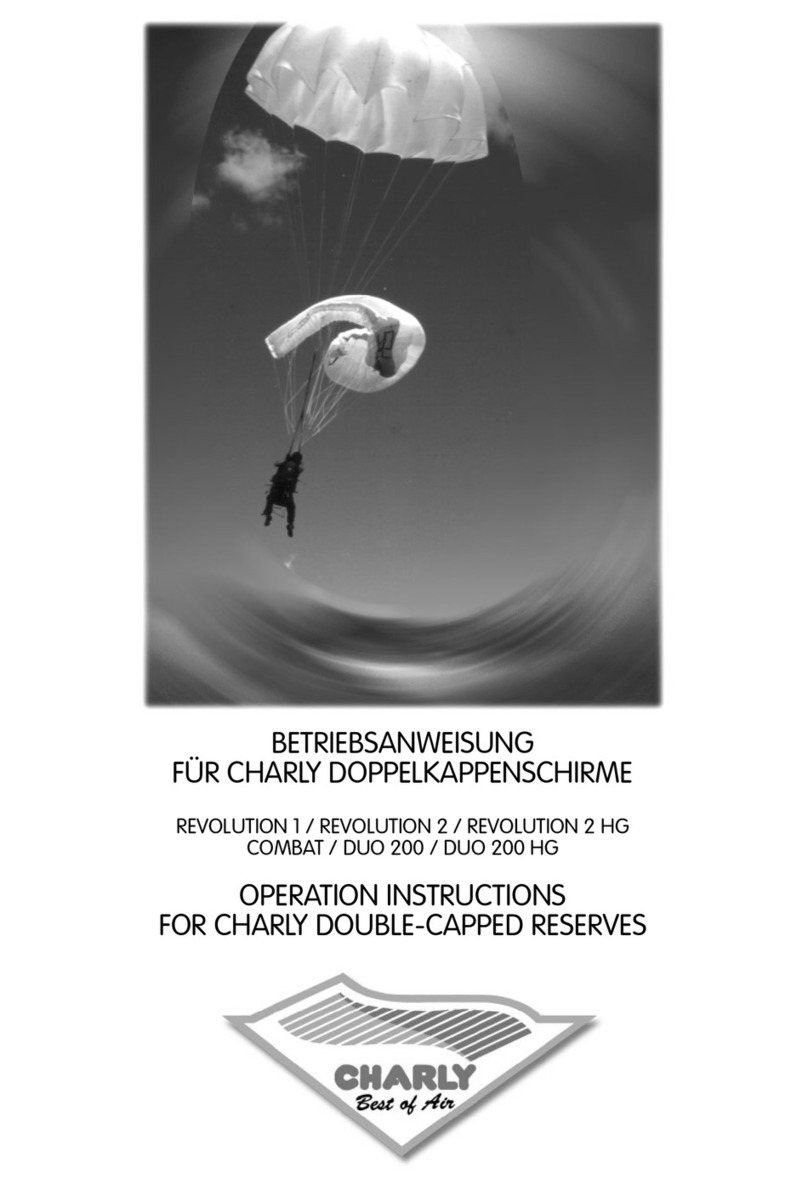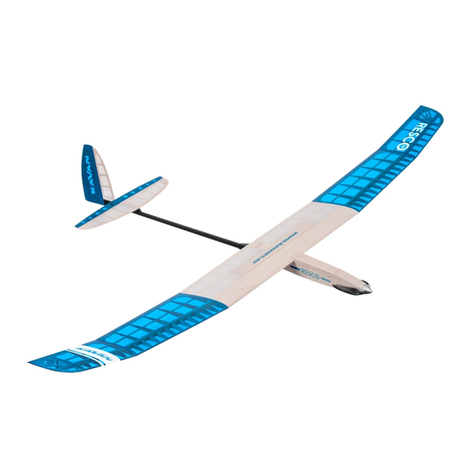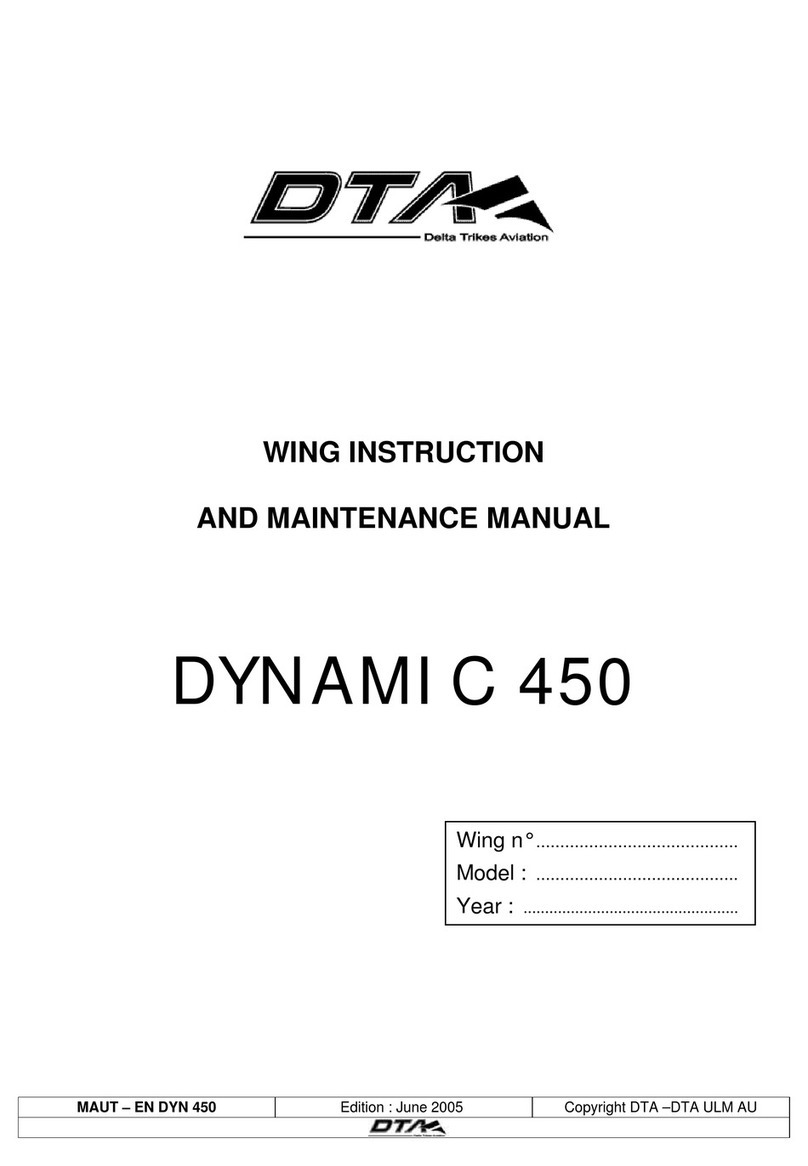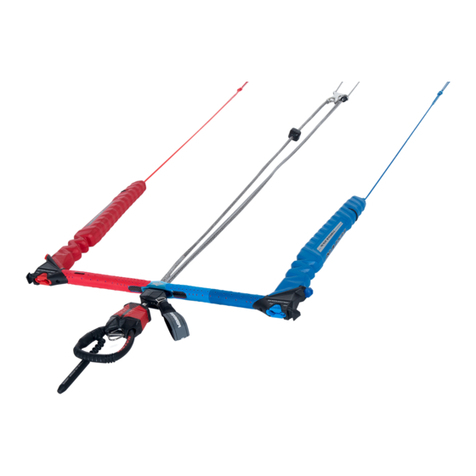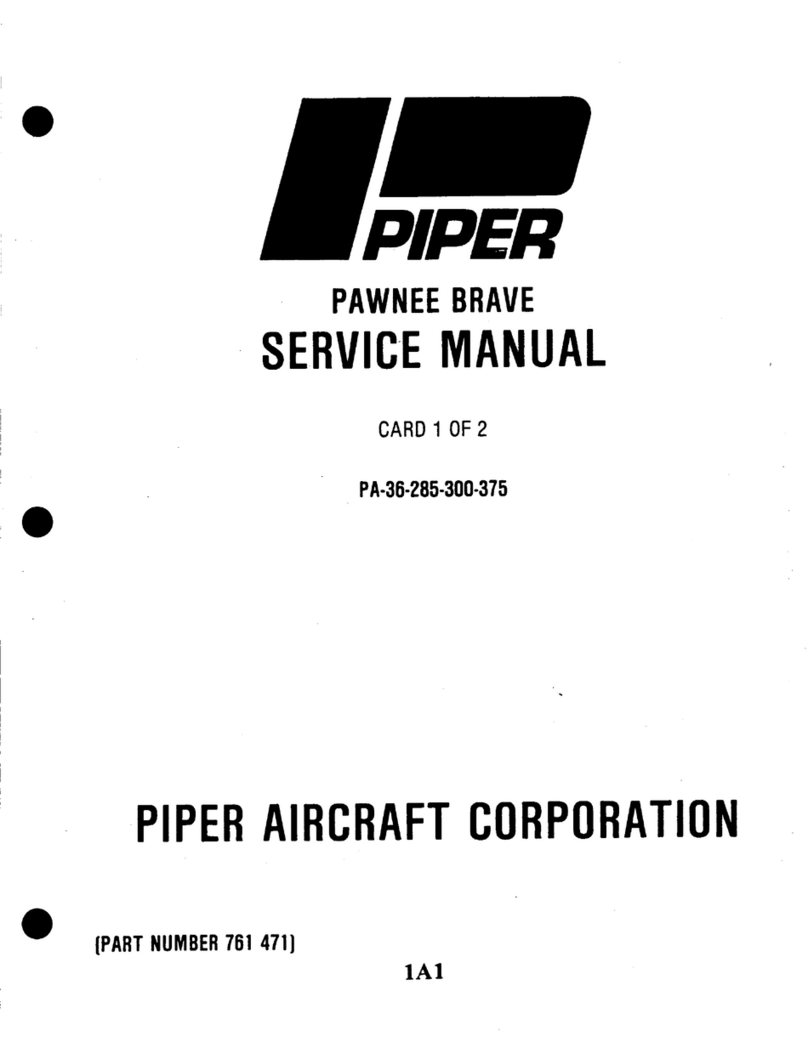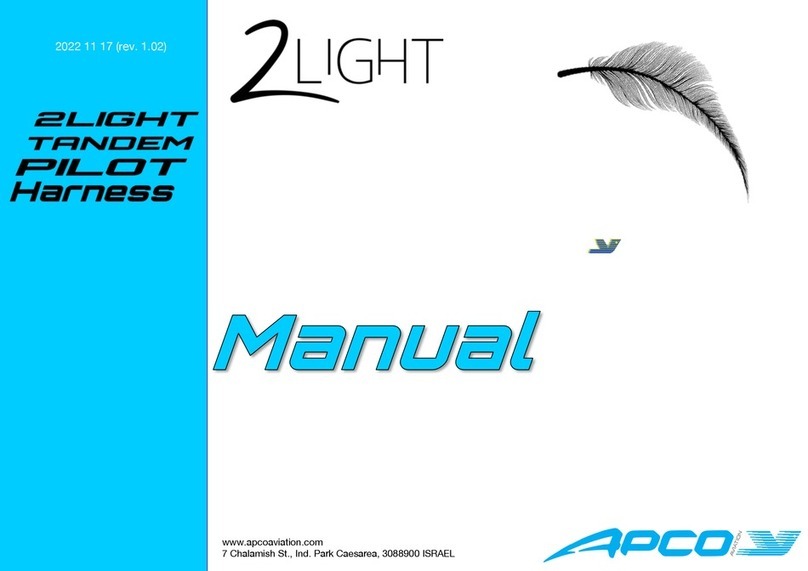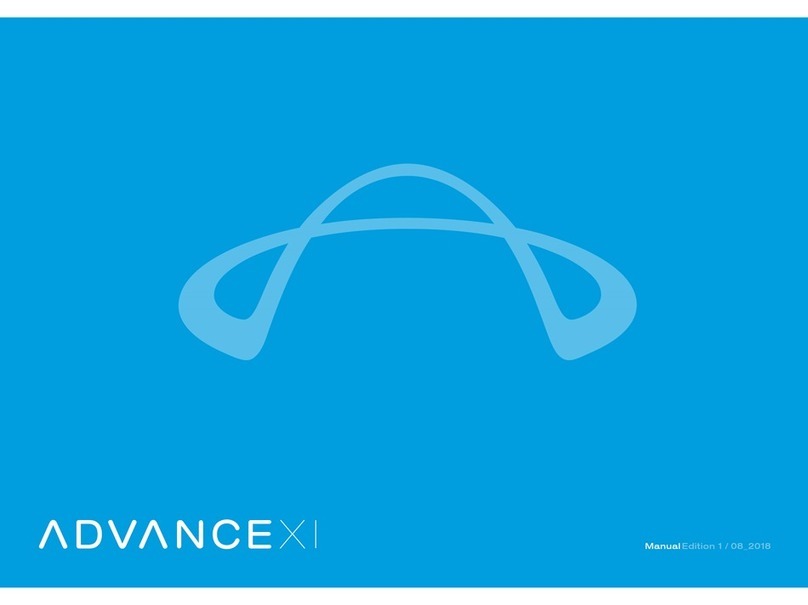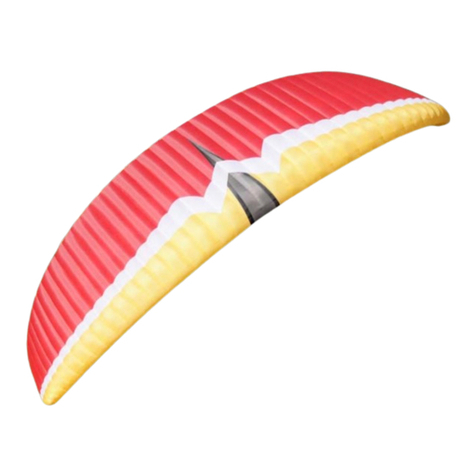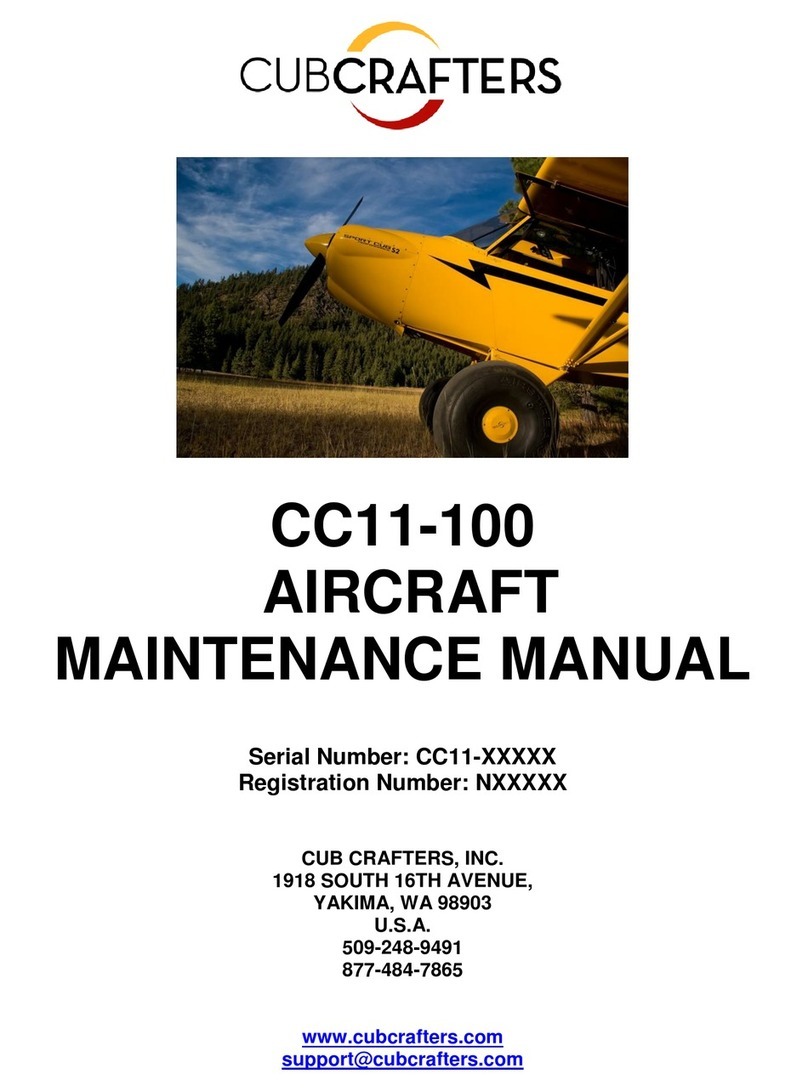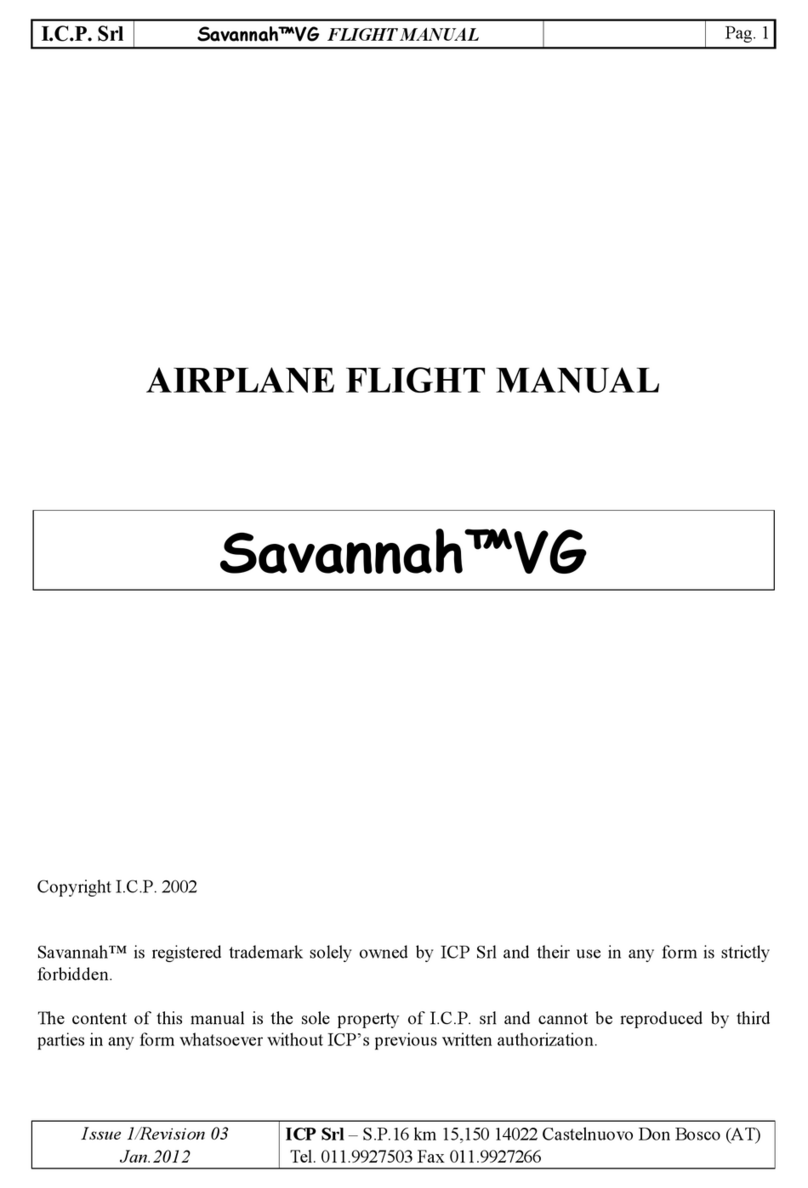CHARLY DIAMONDcross HG Series User manual

Operating instructions
Rescue systems
DIAMONDcross HG (hang gliding)
Type Certication
DIAMONDcross 125 HG (non steerable) EP 184.2017
DIAMONDcross 160 HG (non steerable) EP 185.2017
DIAMONDcross 220 HG (non steerable) EP 186.2017
Norm: N II 91/09 and LTF 35/03
Revision 0
Effective from: Production year 2018
Last update: Nov. 2018
Finsterwalder GmbH - Charly Produkte
Pagodenburgstr. 8 | D - 81247 München | Tel.: +49 (0)89 811 65 28 | Fax: +49 (0)89 814 41 07
Mail: ofce@nsterwalder-charly.de | Web: http://www.nsterwalder-charly.de


3
Thank you for your condence!
Thank you for choosing a CHARLY product!
These operating and packing instructions provide important information on how to
use your rescue system. Please read this manual carefully before installation! It has
been written to serve as a comprehensive guide for the proper handling of your
reserve parachute. If you have any questions related to the use of this rescue
system, please contact CHARLY PRODUKTE directly. If you need professional
packing or repair service, please contact your local dealer or CHARLY PRODUKTE.
For more information about this and other CHARLY products, please visit
www.nsterwalder-charly.de. We wish you great ights and always safe landings.
CHARLY product design / test pilot
Tom Grabner

4
Table of contents
1.
Overall illustration
...................................................................................................5
2.
Safety instructions
..................................................................................................6
3.
Technical data
..........................................................................................................6
4.
Intended use
............................................................................................................7
5.
Operating limits
.......................................................................................................7
6.
Required documents
... ............................................................................................7
7.
Mode of operation
...................................................................................................7
8.
Specic characteristics of the DIAMONDcross HG rescue system
....................8
8.1
Reserve parachute
........................................................................................................8
8.2
Inner container
...............................................................................................................9
8.3
Constructive characteristics
......................................................................................12
8.4
Flight behaviour
...........................................................................................................13
9.
Maintenance, Cleaning
..........................................................................................14
10.
Storage
................................ ................................................................................15
11.
Packing and inspection intervals
.......................................................................15
12.
What to do when damage is detected
................................................................16
13.
Repairs
.................................................................................................................16
14.
Checkup and packing preparations
...................................................................17
15.
Packing
.................................... ............................................................................18
16.
Installation on the harness
.................................................................................18
17.
Placement inside a harness rescue system container
....................................18
18.
Compatibility test
................................................................................................19
19. Transport................................ .............................................................................20
20.
Pre-ight checklist
...............................................................................................20
21.
Specics for hang gliding winch launch
...........................................................20
22.
Flying by the seaside
..........................................................................................20
23.
Environmentally responsible disposal
..............................................................21
24.
Environmentally responsible disposal
.............................................................21
25.
Packing instruction
............................................................................................22

5
1. Overall illustration
Front tip
Main lines Rotor (optional) Hybrid riser
Stabilo Canopy Upper center lines Bottom center lines

6
2.
Safety instructions
This reserve parachute must not be used for skydiving!
The Charly DIAMONDcross HG is certied according to the german and european
standards N II 91/09 und LTF 35/03. The use of this rescue system is at your own
risk. The manufacturer cannot be held liable for any personal injury or material
damage related to the use of this reserve system.
The correct installation of the reserve parachute on the harness is essential and a
compatibility test must be conducted by a competent person. Only a properly
installed rescue system will function as intended and thus contribute to safety.
3.
Technical data
DIAMONDcross delta light
(non steerable)
DC 125 HG DC 160 HG DC 220 HG
Surface
30,7 m² 41,0 m² 59,2 m²
Line length incl. risers
9,96 - 10,32 m 9,96 - 10,35 m 10,60 - 10,90 m
Centre line length incl.
risers
10,37 - 10,47 m 10,47 - 10,57 m 10,85 - 11,02 m
Number of lines/panels
18/16 22/20 26/24
Number of centre lines
5/2 8/2 9/2
Overall length
8,25 m 8,50 m 9,00 m
Max. load EN/LTF
125 kg 160 kg 220 kg
Min. recommended load
60 kg 80 kg 100 kg
Sink rate at max. load
4,5 m/s 4,8 m/s 4,6 m/s
Volumen in ccm 4700 5300 7300
Musterprüf-Nr. EP 184.2017 EP 185.2017 EP 186.2017
Type certicate no.
1,43 kg 1,83 kg 2,57 kg
Weight incl. rotor (optional)
1,60 kg 1,97 kg 2,71 kg
Manufacturer
:
Finsterwalder GmbH - Charly Produkte
Pagodenburgstraße 8
D - 81247 München
Phone
: +49 (0)89 811 65 28
Mail: ofce@nsterwalder-charly.de
Web: www.nsterwalder-charly.de

7
4.
Intended use
Manually deployed emergency parachute for single seat and tandem hang gliders.
5.
Operating limits
• Maximum operating speed: 115 km/h (32 m/s)
• Packing interval: 12 months; subsequently, re-packing is required and must be
documented in the packing and inspection record.
• Inspection interval: We recommend a full inspection of the rescue system every 24
months; re-inspections must be documented in the packing and inspection record
• Permissible operating time: 10 years; subsequently up to 12 years when re-
inspected yearly
6.
Required documents
• Operation instruction
• Packing and inspection record
• The enclosed engineering specications for this air sports equipment is part of
these operating instructions
7.
Mode of operation
In the case of an emergency situation during ight, deploy the reserve parachute by
pulling the release handle with a rm and quick motion. This causes the outer
container to open and the parachute (still packed inside the inner container) is
deployed into the airstream. The release handle is thereby thrown away together with
the reserve system!
The inner container is constructed in such a way that it releases the suspension lines
and the canopy with a little time lag. This way, unintended early opening is prevented

8
and the risk of the lines becoming tangled with the glider, the pilot or another object
or person (e.g. in the case of a crash with another pilot) is minimised. Moreover, the
inner container must gain enough speed after release to provide for a fast opening of
the emergency parachute.
In general, the quicker you throw the reserve system, the faster can its canopy unfold
and open.
After the inner container has been deployed, the suspension lines are released from
their separate compartment. The canopy is released only after the suspension lines
are fully stretched.
The DIAMONDcross HG is designed with slight forward movement, that is
signicantly responsible for a low sink rate and the high pendulum stability.
8.
Specic characteristics of the DIAMONDcross HG rescue
system
8.1
Reserve parachute
The trim of the DIAMONDcross HG is adjusted so that there is a short stall phase
immediately after opening during which rotational energy is instantly reduced in an
emergency situation. Subsequently, the DIAMONDcross HG automatically switches
over to a slight, very stable and pendulum-free forward movement.
The lines of the DIAMONDcross HG are clearly asymmetric in length so that the
base panels do not exactly overlap as usual when packing the canopy but are a bit
staggered. This fanned-out pattern allows for better air inow after the release and
thus leads to an increased opening speed, particularly if the pilot is rotating at high
speed in an emergency situation.

9
The DIAMONDcross HG features a special hybrid riser, to attach the reserve
parachute without an additional belt to the main attachment pont of the hang glider.
This hybrid riser has a high strength dyneema core that is covered with a heat- and
scratch resistant aramid (kevlar) shield.
A coloured marking (triangle) at the front canopy corner of the DIAMONDcross HG
indicate the ight and packing direction. When packing the reserve system, the
markings also serve as helpful reference points.
8.2
Inner container
The inner container has been developed on the G-Force Trainer and is the result of
5 years of experience with rescue system deployments under centrifugal force.
These are its most important characteristics:
Flat construction design, but not necessarily with the least possible volume
Tests have shown that the container can be pulled out of the harness’ rescue
compartment much easier and with less effort than cube-like shaped containers,
sometimes even if they have a smaller volume.
Also, the at container deforms much more when it is pulled out by the pilot in
upward direction. It bends up so that the risk of getting caught in the harness is
reduced as far as possible and the reserve parachute can be deployed with
considerably less effort.
Tapered shape with rounded edges
The tests have also shown that pulling out the rst third of the container requires the
most effort. Accordingly, the likelihood of the inner container getting stuck inside the
harness is highest during the rst phase of deployment. The inner container of the
DIAMONDcross is thus designed to have a very low prole without rough edges in
the front area so that the risk of getting caught in the harness is minimised.

10
However, it must be noted that problems associated with deployment are also
signicantly inuenced by harness design.
No dangerous gaps on the surface of the closed container
The container of the DIAMONDcross has been designed in such a way that the line
bundles cannot get outside the closed container. There are currently many systems
in the market that cannot guarantee this. Especially the popular clover leaf style
containers are prone to this. When the line bundles exit the container too early during
deployment, this can lead to dangerous situations. The closed DIAMONDcross
container does not have any gaps on the surface so that its functionality is
guaranteed even under high centrifugal forces and in extreme conditions.
Redundant container lock
The container with the line bundles is double-locked for improved operational safety
and to prevent an early and thus uncontrolled opening of the rescue system.
This is a further measure to avoid the entangling of the reserve in the paraglider lines
as it contributes to a dened deployment after the release.
Fabric-coated rubber bands
If the container is locked using packing rubber bands or rubber bands without
protection, there is a risk of early breakage as they are often not strong enough –
especially at high centrifugal forces – and might thus release the lines or the canopy
from the inner container too early or the reserve parachute might even remain inside
the harness while only the container is pulled out of the compartment.
Therefore, the inner container of the DIAMONDcross is equipped with fabric-coated
rubber bands with a diameter of 3 mm. The rubber bands can be easily replaced
when necessary due to aging.
Offset release shackle at the inner container
Rescue system deployments on the G-Force Trainer showed that the intuitive pulling
direction of a pilot in a stressful situation is often upward, as with the handbrake of a

11
car. However, this direction is disadvantageous to pull the reserve parachute out of
the harness and it increases the release force signicantly. The release shackle at
the inner container of the DIAMONDcross is designed in such a way that the release
force remains low even in this „worst case“ so that the reserve system can be pulled
out of the harness reliably and fast.
Separate canopy lock
The rescue system container of the DIAMONDcross is designed in such a way that it
rst releases the lines, and the canopy is released only after the lines are fully
stretched. This provides for a dened canopy opening and further reduces the risk of
an entangling of the reserve in the hangglider.
URGENT RECOMMENDATION
Today, also some harness manufacturers offer containers suitable for their
harnesses. The DIAMONDcross has been certied in combination with its inner
container and many of the container’s details contribute to an optimal performance of
the system. Tests showed that the DC container performs signicantly better in many
aspects than the container that comes with a harness. 5 years of experience with
rescue system deployments on the G-Force Trainer (a centrifugal force simulator)
have been incorporated into the development of the container. We therefore urgently
recommed the use of the original DC inner container and to let the release handle be
attached to it by an authorised specialist if necessary. Should sewing be required,
you can contact CHARLY for assistance. We are offering this extra service as the
interfaces of the different components are not standardized in paragliding. A careful
adjustment of all components in addition to the obligatory compatibility test thus
optimises your system signicantly!

12
WARNING (according EN certication rules)
Use of this parachute with any alternative inner container: the speed
of opening and opening shock test has been completed using the
inner container supplied. Use of any other inner container may
produce different results (including failure)
8.3 Constructive characteristics
Diagonal suspension and ight direction
The diagonal „diamond-conguration” is one of the main innovations. Due to the
diagonal ight direction, the calculative aspect ratio increases from 1 (square) to 2
(diagonal square). As the DIAMONDcross has a dened forward movement, the low
sink rates are not only inuenced by the drag coefcient but, similar to a wing, also to
the lift coefcient. The higher aspect ratio that results from the diamond conguration
is essential for the resulting ight and gliding qualities.
No pendulum tendency immediately after the opening
By contrast to other reserve parachute systems, the DIAMONDcross does not exhibit
a pendulum tendency.
The pendulum tendency can lead to severe injuries, particularly in the case of
deployments at low altitudes.
To avoid this effect by design, the DIAMONDcross has a special trim that leads to a
strong S-shape in the cross section of the parachute. As tests have shown, this
causes a righting momentum that reliably dampens pendulum immediately after the
opening.
When the DIAMONDcross opens, after a short deep stall phase, the canopy reliably
changes into a steady, pendulum stable ight phase with very low sink rates.

13
Optional installation of the Charly Rotor
We recommend the optional installation of the Charly Rotor Art No. HFa160. The
rotor can be installed without additional sewing between the riser and the main lines.
For installation contact CHARLY PRODUKTE.
8.4
Flight behaviour
Forward speed reduces risk of injury
The human body is most vulnerable to injury when the velocity vector is directed
towards the spine and the impact area is at right angles to that axis.
A forward speed in combination with considerably lower sink rates is thus always
associated with a lower risk of injury than an impact at right angle and higher vertical
speed, even if forward speed is increased by tailwind.
Lower sink rates allow for more time to react
The low sink rate gives the pilot more time to prepare for landing.
We thus recommend the following course of action after rescue system deployment:
1)
Pull handle, remove inside container from harness or outside container, throw
the container down, direction legs. Check after 5 seconds if the canopy has
opened properly.
2)
Orientation – check altitude
3)
Open the zip fastener of the harness and move legs out of the harness

14
4)
Bring your hang glider in a stabile position and if possible stand onto the ight
control with both feet.
5)
Landing
Look into direction of the most possible landing area and prepair for a landing
fall. Put your knees together and roll to the side when you touch the ground.
Never stretch the legs, this can cause injuries during the touch down!
6)
Inform the rescue services
Since very often search operations are initiated by observers after rescue
system deployments, we highly recommend to contact the police or the rescue
immediately after landing even if there is no personal injury.
However, the most important measure in an emergency situation is DEPLOY!!! It is
never too late for the rescue parachute. As long as there is a chance to deploy,
it is ALWAYS the better alternative!
If your altitude is low, keep watching the ground and prepare for landing.
With the DIAMONDcross, you are provided with the largest possible passive safety a
rescue system can currently offer!
You have purchased a rescue system you can always rely on. It went through a large
number of on-ight tests that far exceed the regulatory requirements.
The tests were conducted almost exclusively above ground and thus under real-life
conditions, they included all available sizes and there were no injuries.
Therefore, never wait too long to deploy your rescue system in a problematic
situation during ight.
9. Maintenance, Cleaning
The DIAMONDcross rescue sytem by CHARLY has been designed for heavy-duty
use and to withstand extreme conditions. Accordingly, we have selected only

15
especially durable high strength quality materials. However, durability strongly
depends on the care and maintenance by the pilot.
Soiled canopies and containers can be cleaned using clear tap water.
Attention: Acid marks or mould spots might affect the strength of the parachute.
Rescue parachutes that are soiled in that way must be sent to the manufacturer for a
check-over and possibly a repair. Never wring or brush the wet canopy!
Particular attention should be paid to the following points:
• Do not expose the packed rescue system to large variations in temperature
and provide for sufcient air circulation to avoid the formation of condensation.
• Avoid unnnecessary exposure to the sun (UV radiation).
• Unpack the wet or damp canopy and let it dry at room temperature or outside
in a shady place.
• After salt water exposure, immediately rinse the canopy thoroughly with fresh
water.
• Clean all components only with fresh water and if needed using neutral soap;
never use chemicals containing solvents!
10.
Storage
Oils, greases, acids and dyes must not be stored in close proximity to the rescue
system. Store in a well-ventilated, dry room. Rescue systems that are not used for a
long time should be stored unpacked.
11.
Packing and inspection intervals
The rescue system must be aired and re-packed according to valid packing
instructions every twelve months to guarantee its reliable and fast opening at any

16
time. If the rescue system was exposed to wet conditions, moisture or extreme heat,
it must be re-packed immediately.
If the rescue system has been deployed in an emergency situation or during a safety
training, it has to be re-checked by the manufaturer or by an authorised service
centre. It must also be thoroughly inspected by a competent person after every larger
stress exposure (e.g. a tree landing).
12.
What to do when damage is detected
When damage is detected during inspection, the rescue system must be sent in to
CHARLY PRODUKTE for repair. This also applies to damages whose effects on
airworhiness cannot be unambiguously determined. In either case, the manufacturer
must be involved in the repair process!
13.
Repairs
Generally, repairs of emergency parachutes must never be carried out. Repaired
seams can have signicant inuence on material strength. Damages must be
assessed in each individual case. Therefore, only the manufacturer or an authorised
service centre after consultation with the manufacturer may carry out repairs using
original materials. Manufacturer-approved repair instructions must be enclosed in the
packing and inspection record after the repair has been carried out and have to be
handed on as part of the rescue system in the case of release.
The preparation of repair instructions by the manufacturer is subject to a fee. In the
case of non-compliance with the suggested repair procedure, airworthiness
according to EN or LTF expires automatically.
Acis marks and stains as well as rips and chafes may affect the stability of the
components. Such damages must be inspected and, if necessary, repaired by the
manufacturer or by an authorised service centre.

17
We recommend to regularly check the rescue system for signs of wear and to let
CHARLY or an authorised service centre repair it if necessary before the next use.
14.
Checkup and packing preparations
Before packing, hang up the canopy so that it does not touch the ground for at least 6
hours in a well-ventilated room without direct UV exposure. If the canopy got wet,
please make sure that the suspension lines, that have become considerably heavier
due to the moisture, are unburdened and cannot stretch. Do not use heating
radiators for drying!
If possible, packing should be carried out on a packing table or at least on a clean,
antistatic underlay. As a packing aid, you need a piece of cord or a parachute line of
50 cm length and the possibility to put the canopy under tension between the
harness respectively the suspension point and the packing loop. We recommend to
attach an elastic cord with carabiner to the packing loop at the apex of the canopy.
Several small bags with lead scrap or sand can be used for weighing down the
canopy which makes packing easier and reduces the packing volume. All rubber
bands must be replaced by new ones when re-packing. Original rubber bands can be
purchased from CHARLY PRODUKTE.
We strongly recommend to let your rescue system be packed by a competent
person.
The packer must inspect the canopy for possible damage. If the rescue system has
to be re-packed after an emergency deployment, a prior check-over by the
manufacturer or an authorised service centre is compulsory.

18
15.
Packing
Packing the DIAMONDcross is described in detail starting on page 22. Make sure to
read the most recent valid version of the instructions. It is available for download in
multiple languages on Finsterwalder & Charly’s website.
16.
Installation on the harness
Volume and shape of the outer container should thereby be similar to the inner
container.
Follow the instructions from your harness manual and attach the rescue system
container at the suspension point as described. Make sure to check the container for
a rm and secure t. Also, it should not interfere with moving parts such as a speed
system, webbings running through, etc.
17.
Placement inside a harness rescue system container
Follow the instructions from your harness manual to place your rescue system inside
the container. Additionally, the following ponints must be strictly adhered to:
•
Only use the original release handle that is delivered with the harness. Other
release handles must not be used as they do not guarantee faultless
operation.
•
The container must have a suitable volume.
•
When using an inner container with asymmetric attachment loop, it must be
placed inside the harness container in such a way that the attachment loop
remains as close as possible to the release handle and that the rescue system
does not get twisted during deployment.

19
•
When placing the rescue system inside the harness container, it is absolutely
necessary to make sure the connection between release handle and safety
splint is shorter than the connection between release handle and inner
container.
•
Install the release handle at the intended position in such a way that the
connecting line is not under tension and the safety splint is not pulled out of
the closing loop.
•
After each packing, a test deployment must be carried out to ensure the
proper operation of the rescue system! Deployment from the ying position
must be possible without any difculty and according to the specications of
the manufacturer
.
18. Compatibility test
Each new combination of a rescue system and a harness must be tested for
compatibility in a k-test by an authorised person after the rst packing.
Deployment from the ying position must be possible without any difculty and
according to the specications of the manufacturer. The release force should thereby
not exceed 70 N and the inner container should deploy easily from the integrated or
externally attached outer harness container.
The tester has to conrm test execution in the packing and inspection record.
Tests and deployments during trainings on the G-Force Trainer showed that
deployments under centrifugal force can sometimes lead to considerably higher
release forces and coordination problems of the pilot. Complementary to the k-test,
we thus recommend to test the individual combination of harness and rescue system
in the course of a training under centrifugal force (4 - 5 g).

20
19. Transport
Take care that the rescue system is not exposed to extreme heat during transport
(e.g., in the boot of a car in the summer). Also, it should always be handled with care
(keep it clean, do not put any sharp or heavy items onto it, etc.). When packing it into
the paraglider pack sack, be careful not to damage the rescue system with buckles or
other items and to not accidentally open the release handle.
20. Pre-ight checklist
In addition to the standard pre-ight check (see paraglider / harness operating
instructions, possibly winch etc.), also the correct closure of the rescue system
container and the proper t of the release handle have to be checked prior to each
takeoff.
If the rescue system connecting line is unhinged after each ight (e.g., when using a
front container system), the pre-ight check has also to include the correct
attachment of the riser!
21. Specics for hang gliding winch launch
For winch launching, please pay attention to the harness, hang glider and winch
manufacturers’ provisions! When using a front container, it must be ensured that
rescue system deployment is possible at any time.
22. Flying by the seaside
Using the rescue system at the seaside or in saline air for a longer period may cause
premature material ageing. Under such conditions, the rescue system should be
checked and inspected for airworthiness more frequently.
This manual suits for next models
6
Table of contents
Other CHARLY Aircraft manuals
